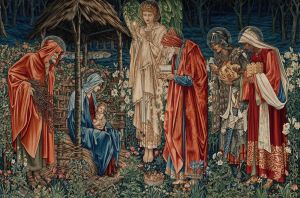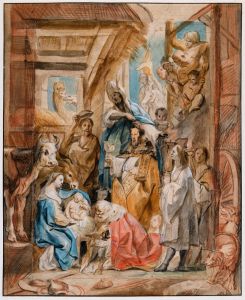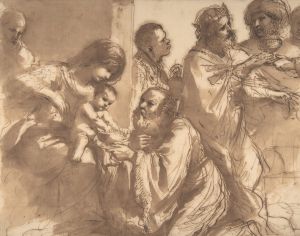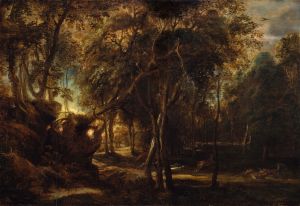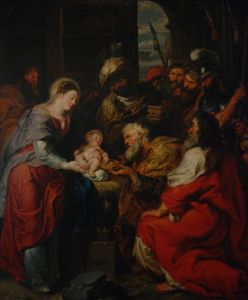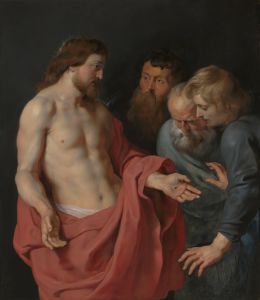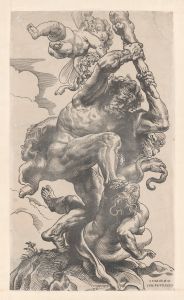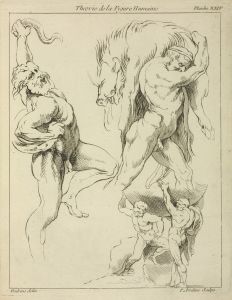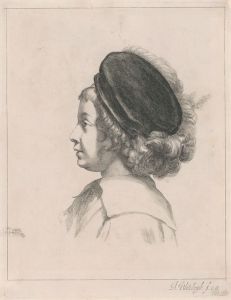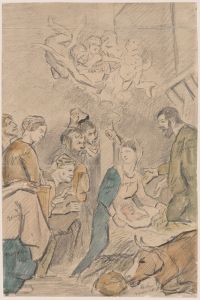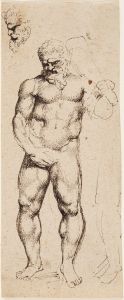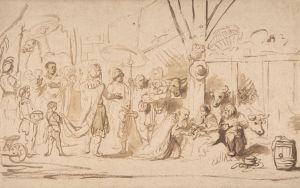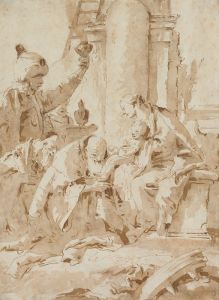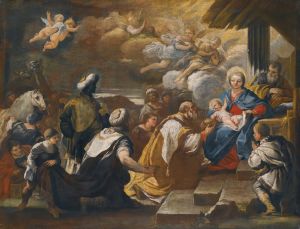
The Adoration of the Magi
A hand-painted replica of Peter Paul Rubens’s masterpiece The Adoration of the Magi, meticulously crafted by professional artists to capture the true essence of the original. Each piece is created with museum-quality canvas and rare mineral pigments, carefully painted by experienced artists with delicate brushstrokes and rich, layered colors to perfectly recreate the texture of the original artwork. Unlike machine-printed reproductions, this hand-painted version brings the painting to life, infused with the artist’s emotions and skill in every stroke. Whether for personal collection or home decoration, it instantly elevates the artistic atmosphere of any space.
Peter Paul Rubens' The Adoration of the Magi is a renowned painting by the Flemish Baroque master, created in 1624. The artwork depicts the biblical scene of the three Magi presenting gifts to the infant Jesus, a popular subject in Christian art. Rubens' interpretation of this event is notable for its dynamic composition, vibrant color palette, and dramatic use of light and shadow, hallmarks of his Baroque style.
The painting was commissioned by the City of Antwerp for the high altar of the St. Michael's Abbey Church. Rubens, who was deeply influenced by Italian Renaissance and Baroque art, infused the scene with grandeur and movement, emphasizing the emotional intensity of the moment. The figures are arranged in a crowded, theatrical composition, with the Magi and their retinues surrounding the Virgin Mary and the Christ Child. The artist's use of chiaroscuro enhances the sense of depth and drama, drawing the viewer's attention to the central figures.
Rubens' The Adoration of the Magi reflects his mastery of depicting human emotion and physicality. The Magi are portrayed as distinct individuals, each with unique expressions and gestures, symbolizing the universality of Christ's message. The rich costumes and exotic details, such as the inclusion of camels and attendants, highlight the opulence and diversity of the Magi's entourage, a common feature in depictions of this scene during the Baroque period.
The painting underwent several modifications by Rubens himself. In 1628-1629, during his stay in Spain, he reworked the composition, adding new elements and enhancing the overall effect. This revised version is now housed in the Museo del Prado in Madrid, where it remains one of the museum's highlights. The painting's large scale and intricate details make it a testament to Rubens' technical skill and artistic vision.
Rubens' The Adoration of the Magi has been widely studied and admired for its synthesis of religious devotion and artistic innovation. It exemplifies the grandeur and emotional resonance of Baroque art, as well as Rubens' ability to convey complex narratives through his dynamic and expressive style. The work continues to be celebrated as one of the finest examples of Rubens' religious paintings.





